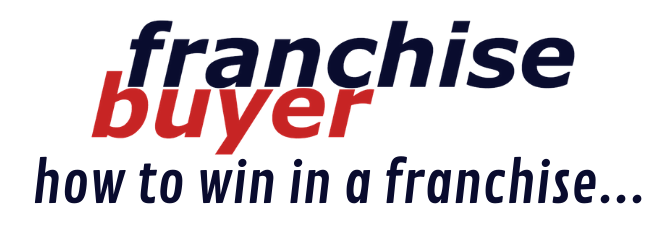
Does franchising really have an advantage over other businesses?
Using combined and meaningful data from multiple operators of the same business in different locations can provide significant data – but is it useful for better decision making?
Going onto your own business is one of the biggest decisions anyone can make. The rewards (and risks) can be high and we are constantly reminded how critical it is to both obtain good advice and to undertake effective research. But it doesn’t stop there, as relevant and timely information is critical to not just building and maintaining a healthy business, but also achieving your ultimate exit strategy.
Many franchise systems enjoy a distinct advantage over independent small operators with the ability to evidence a successful and proven business model. While this article is written primarily for a prospective franchisee many of these considerations will apply to any small business in the market, so I encourage you to read on!
Business Information Cycle
Broadly speaking we can break down the typical information cycle for a small business into four basic stages, which I would like to consider in turn:
- Feasibility – the decision to invest in the business,
- Establishment – starting or taking over a new business,
- Growth – building the business,
- Maturity – achieving the potential of the business.

Feasibility
This is probably the most critical stage of the whole process. By all means be excited about the opportunity, but remember what is at risk; 100% of your initial investment, your lifestyle and the happiness of those closest to you. Once comfortable that you are well suited to the type of business you can get down to the serious matter of making sure it will provide an acceptable return on your investment (money and time).
A good starting point is to consider the market in which you propose to operate. Who are the current and potential competitors? Will the products or services being sold remain relevant in coming years.
Franchising Edge 1
Franchise systems are legally required to make certain information available to prospective franchisees in the form of a “Disclosure Document”. The Disclosure Document contains a wealth of information to assist in determining the appeal of the investment. A brief history of the franchise system, the key people behind it, locations of existing outlets, initial costs, ongoing commitments, terms and perhaps most importantly, contact details for existing and previous franchisees are just some examples of mandatory information
included.
High termination and transfer rates can all provide warning signs that the financial and lifestyle expectations of existing franchisees are not being met. Similarly sustainable growth with low “churn” (change over) rates can provide strong positive indicators.
Tip: A high franchisee churn rate or low unit continuity rate are both potential early warning signs.
Franchise brands should have a clear line of sight of the key financial performance indicators for existing franchisees. While they will generally be very careful about making “earnings representations”, it is reasonable to ask for guidance on what “average” looks like in their network. Average should not be confused with “mediocre”; in this context we want to know what most are experiencing so a meaningful budget can be prepared.
Tip: Focus on the key financial drivers of franchise unit performance; Sales, Cost of Goods (COGS), Rent and Labour
The Australian Franchise Registry™ provides a voluntary platform for franchise brands to lodge their Disclosure Documents and promote
their transparency. The registry also publishes reports aggregating that information that can be used to get a feel for things like average entry costs, ongoing fees and unit turnover rates.
For example, the overall average Initial Franchise Fee from the documents of registered brands is $44,049, ranging from $3,500 to
$92,000. At $45,448, the non-food brands’ average is slightly higher. For a new franchisee the key question with an initial franchise fee (and most other fees for that matter) is what do I get for that fee?
Establishment
The importance of being ready to commence trading cannot be underestimated. Adequate training and absolute attention to detail is required here. Connection of all utilities, fully functioning Eftpos facilities, completed fitouts, landlord handover and adequate stock levels are but a few simple examples.
Franchising Edge 2
Established quality franchise systems will generally have a comprehensive and proven training program in place to help new business operators be ready to maximise their business outcomes from day one. In the background these brands will also be overseeing the detail to ensure all items are ticked off on checklists developed over time to ensure a smooth opening.
Tip: Use the Disclosure Document to contact one or more relatively new existing franchisees and ask them to share their experience of being positioned for success from day one.

Growth
Experiencing growth in any new business can provide enormous satisfaction and energy for the journey. However, growth can also create pressure on staffing, working capital and other logistics.
There are many interrelated items that should be measured and used to identify early warning signs and guide ongoing business investment including:
- TRADING PATTERNS - Identification of peak trading times,
- STAFFING – appropriate number and experience mix for different trading periods,
- SALES EXCELLENCE – ability of staff to maximize items / revenue per transaction,
- PRODUCT MIX – identification of slow and faster moving products,
- LOCAL AREA MARKETING – results of the impact and the best timing for various local area marketing initiatives,
- CUSTOMER SATISFACTION – insights into ability to retain existing clients, build repeat business and respond to customer feedback,
- SECURITY – maintenance of records evidencing high standards (or development needs) for staff security, cash security, theft prevention,
- COMPLIANCE – strong processes to promote the effective management of payroll, OH & S, and industry specific standards.
Tip: The faster the business grows the greater the investment of time that is required to monitor and act on information to capitalise on the opportunity and mitigate the risks.
Franchising Edge 3
Established quality franchise systems will generally have not only a set of benchmarks for key financial and nonfinancial indicators for the entire system but an effective field support function that both identifies and provides remedies for weaknesses in an individual business.
Maturity
For many business owners the achievement of the maturity phase creates the opportunity to take a step back from the business and focus on their next challenge and opportunity. For some business owners their intensity can reduce at this time which can create the risk of deterioration in the business outcomes.
These risks normally arise from the owners or their staff feeling complacent or stale and subconsciously losing their brand passion and customer focus. The lack of presence of the owner “in the business” may also unintentionally create an environment of lower standards and reduced controls.
Accordingly, it remains critical that the key information and data relied on so heavily in the growth stage is continued to be provided and acted upon in a timely manner.
The importance of key indicators cannot be underestimated as business owners contemplate expanding their interests, seek a renewed franchise agreement term or contemplate the sale of their business. Remember at some point you will be subjected to the feasibility assessment rather than undertaking it.
At FRANdata, we have been collecting and analysing data on the franchise sector for almost thirty years and have now accumulated information covering 22,000 franchised businesses; or close to 30% of the reported Australian market.
One of the more useful applications of data comes from looking past the numbers and trying to learn and question further what the underlying information may be telling us. In the context of franchising it can be very helpful when trying to compare and contrast the offerings of different franchise brands.






